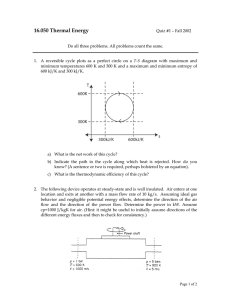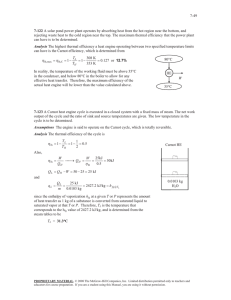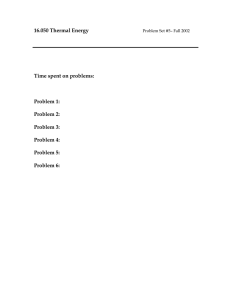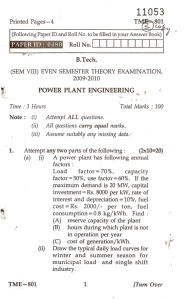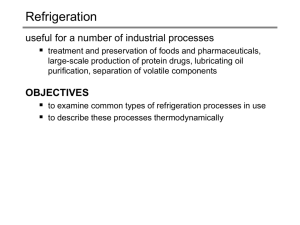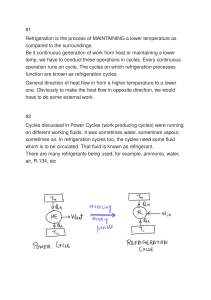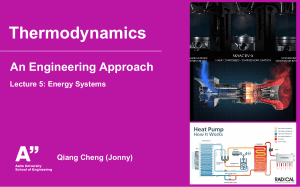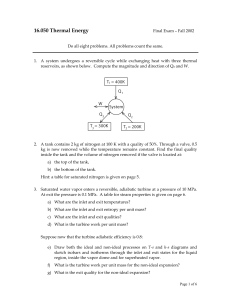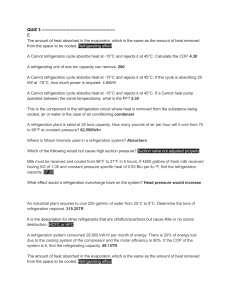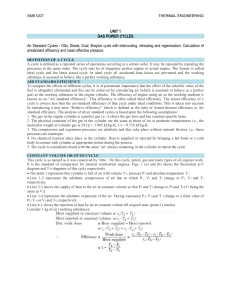16.050 Thermal Energy Time spent on problems: Problem 1:
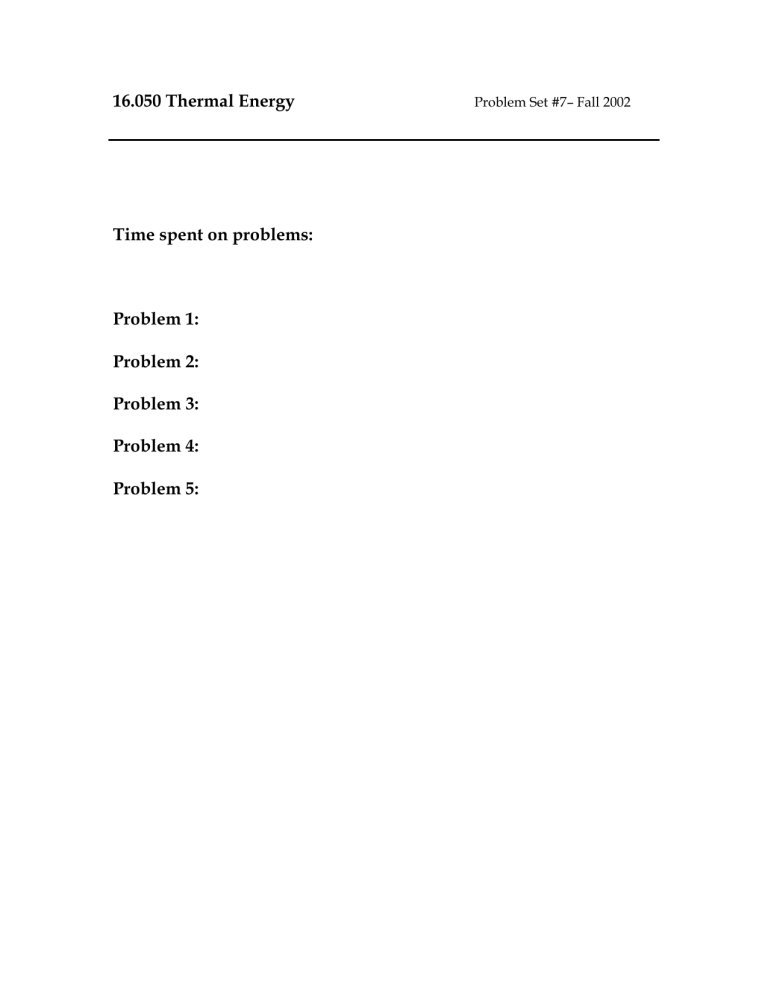
16.050 Thermal Energy
Time spent on problems:
Problem 1:
Problem 2:
Problem 3:
Problem 4:
Problem 5:
Problem Set #7– Fall 2002
16.050 Thermal Energy
Problem Set #7 – Fall 2002
Do all problems. Please use a separate sheet of paper for each problem.
1. A Carnot cycle, that uses water as two-phase working medium, is run in reverse as a refrigeration cycle. Heat is rejected at a temperature of 25 o C and the coefficient of performance is 4.
(a) Sketch the Carnot refrigeration cycle in P-v and T-s diagrams.
(b) At what temperature is heat absorbed from the surroundings?
(c) What is the specific work required to run the Carnot refrigeration cycle?
2. Reynolds and Perkins, Engineering Thermodynamics, 2 nd Ed. Problem 5.39, pp. 150
3. An experimental geothermal energy system in Baja, California consists of a hot water well, a flasher-separator-collector, and a 10,000 kW Rankine engine. The pressurized ground water at 150 bar, 280 o C leaves the well, passes through a throttle and enters the flash chamber that is maintained at 15 bar. The flashed vapor enters an ideal turbine as saturated vapor at 15 bar; the turbine exhausts at 1 bar. The unflashed water runs to waste. Find the hourly amount of ground water required for continuous operation.
Pressurized Ground Water
P=150 bar
T=280 C
Throttle
Sat. Vapor
@ P=15 bar
Flash
Chamber
P=15 bar
Sat. Liquid
To waste
Problem 3
P=1bar
Page 1 of 3
4. The throttling calorimeter is a device for measuring the state of a liquid-vapor mixture. The procedure is to bleed off a small amount of the mixture, throttle it through a valve, and make measurements at station 2 as shown below.
P
1
= 7 bar Measurements: P
2
= 0.3 bar
T
1
= 165 o C T
2
= 90 o C
(a) Explain why P
1
and T two are required).
1
do not fix the state of the “wet” mixture (A sentence or
(b) Explain how P
2
and T
2
measurements allow one to determine state 1 and discuss how much throttling is necessary for this scheme to work (State all your assumptions and bolster your explanation by an equation or two).
(c) Compute the quality at state 1 for the measurements below, assuming the fluid is water.
(d) Draw this process on a T-s diagram (see “Thermal Properties Supplemental
Handout” page 1) and check on the quality using the T-s diagram.
5. Consider the ammonia Rankine-cycle power plant shown in the figure below, a plant that was designed to operate in a location where the ocean water temperature is 25 o C near the surface and 5 o C at some greater depth. You may assume cp=4.2 kJ/kgK for the seawater. a) Determine the turbine power output for the ammonia cycle. b) Determine the required pump power input ( Hint: for a liquid you can assume v=constant.) c) Determine the mass flow rate of water through each heat exchanger. d) What is the thermal efficiency of this power plant?
Page 2 of 3
Problem 5
Page 3 of 3
